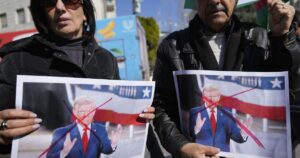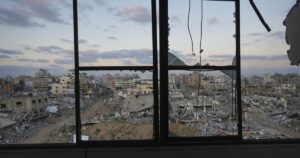The Dictatorship
The many ways Trump’s foreign aid freeze is hurting Americans
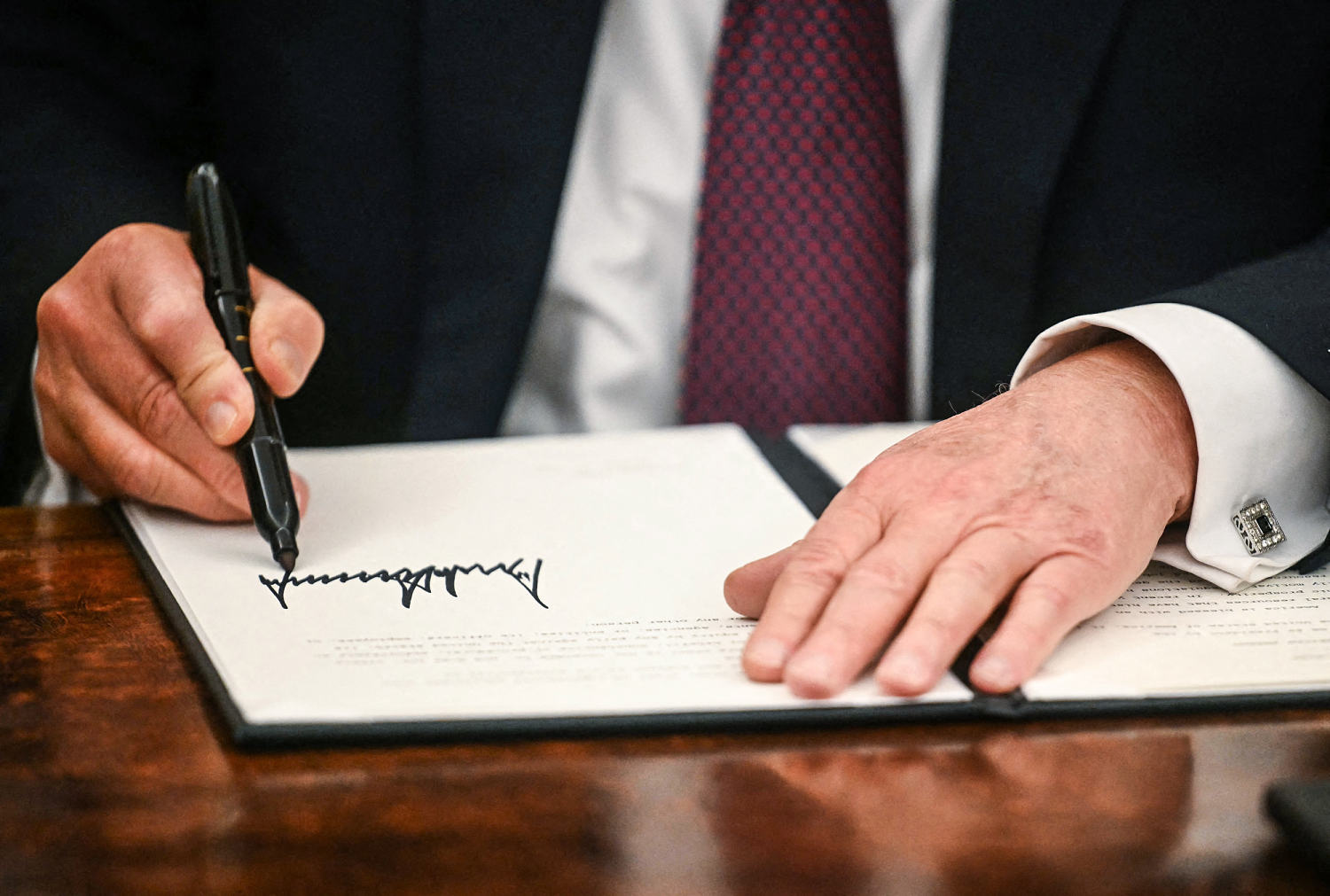
When the Trump administration issued executive orders suspending federal funding and U.S. aidit triggered rapid panic in communities across the country and sowed confusion over whether the freezes would halt programs like Head Start’s early childhood education program, delivery of food to the elderly through Meals on Wheelsclinical trials for cancer, Alzheimer’s and other diseases, and the operation of the 988 national suicide and crisis hotline. A subsequent block to the freezing of federal funds and a vaguely worded rescission of the memo only added to the administrative chaos.
Foreign development assistance remains paused for 90 days under an executive order issued by President Donald Trump.
Whatever the rescinding of the memo means for domestic loans and grants, it did not change the fact that foreign development assistance remains paused for 90 days under an executive order issued by President Donald Trump, to resume only following a review of programs for consistency with his administration’s foreign policy.
The freezing of U.S. foreign aidwith blanket orders to pause U.S.-funded programs globally, has stopped work in most military and security assistance programs, including in Ukraine and parts of the Middle East, along with programs that train Mexican and Colombian police in anti-narcotics enforcement and programs that work to interrupt human trafficking. Programs that clear landmines and explosive war remnants in Mali and Sudan were paused. The U.S. also cut off programs that provide clean water, lifesaving medicine and shelter to vulnerable populations.
The move effectively ends American “soft power” efforts overseas, in which we have aimed to win hearts and minds with humanitarian and development assistance rather than relying solely on military strength. This effectively hands off the reins of global leadership to China, whose development assistance efforts have already ramped up as they work to win more power abroad.
The freeze on foreign aid created even more egregious and immediate security risks, most notably in the stoppage of funds to the guards for some 10,000 Islamic State fighters in Syrian prisons — a group that U.S. counterterrorism and military officials see as a “potential terrorist army in waiting” if they are released or break free. After some guards stopped showing up for work in the wake of the abrupt funding freeze, the State Department reportedly rushed to approve an exemption to the foreign aid ban.
More exemptions followed, adding to the confusion. On Tuesday night, Secretary of State Marco Rubio began to backtrack on the near-total foreign aid freeze, offering a temporary exemption for some funds to support critical medical, food and subsistence assistance. Much like we’ve seen in the case of federal funding for domestic programs, widespread confusion among international nongovernmental organizations remains, with uncertainty about who is eligible for the exemptions, how long they will last and what the review process for restoring aid will look like for each program.
The Syrian prison guard fiasco illustrates the level of risk U.S. funding freezes introduce globally.
The Syrian prison guard fiasco illustrates the level of risk U.S. funding freezes introduce globally. If a funding freeze is introduced again in the domestic context, we should expect similar security implications. A domestic freeze of grants and loans like the one Trump ordered this week would cut off emergency preparedness and response funding that enables states and local authorities to prepare for nuclear, radiological, chemical and biological events. It would pause defense grants that support military readiness and capacity. It would end programs that work to counter foreign interference from Russia, China and Iran. And a domestic freeze would halt programs that combat terrorism at home and abroad, including grants that are testing effective strategies to counter radicalization and mobilization to violence.
Federal funding underwrites the costs of university-based and overseas immersive language training and capacity building for regional and area studies expertise deemed key to national security needs — programs that were set up when the U.S. found itself with hardly any Russian speakers in the federal government at the start of the Cold War.
In a myriad of invisible ways, each one of us owes our personal safety and security to the protections created by a wide range of federal funding. The foreign aid freeze shows all too clearly the dangers that are created by sudden funding and work stoppages. So while we continue to parse what’s next in the domestic freeze on all federal grants and loans, we are all at significant risk as our short-term preparedness for emergencies and our longer-term capacity to ensure safety and security potentially come to an abrupt end.
Meanwhile, the sudden and chaotic imposition of “America First” isolationism globally all but ensures ripple effects in global resentment in ways that will have security implications for years to come. We should all be grateful that a last-minute State Department exemption to the foreign aid ban prevented the release or escape of 10,000 ISIS terrorists in Syria. But we should be very concerned about the grievances and anger we are brewing now, and the potential for those grievances to escalate into violence and harm.
Cynthia Miller-Idriss is a professor in the School of Public Affairs and the School of Education at American University, where she directs the Polarization and Extremism Research and Innovation Lab (PERIL). Her most recent book is “Hate in the Homeland: The New Global Far Right.”
The Dictatorship
Trump’s suggestion the US ‘take over’ the Gaza Strip is rejected by allies and adversaries alike
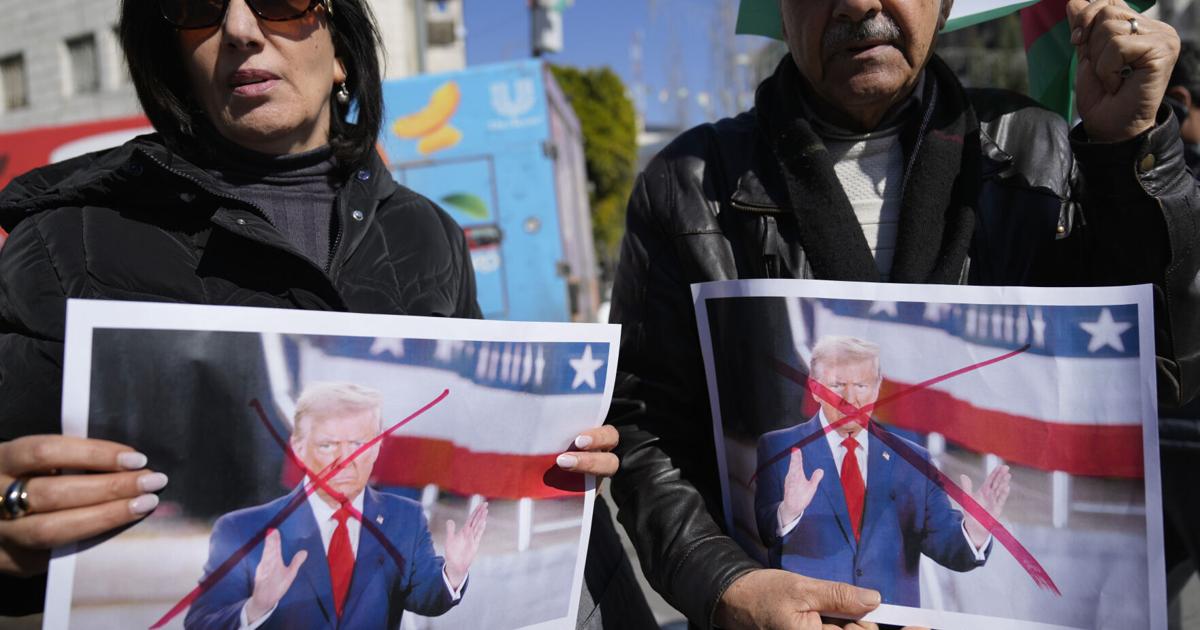
DUBAI, United Arab Emirates (AP) — President Donald Trump’s proposal that the United States “take over” the Gaza Strip and permanently resettle its Palestinian residents was swiftly rejected and denounced on Wednesday by American allies and adversaries alike.
Trump’s suggestion came at a White House news conference with Israel Prime Minister Benjamin Netanyahuwho smiled several times as the president detailed a plan to build new settlements for Palestinians outside the Gaza Strip, and for the U.S. to take “ownership” in redeveloping the war-torn territory into “the Riviera of the Middle East.”
“The U.S. will take over the Gaza Strip, and we will do a job with it too,” Trump said. “We’ll own it and be responsible for dismantling all of the dangerous unexploded bombs and other weapons on the site, level the site, and get rid of the destroyed buildings, level it out, create an economic development that will supply unlimited numbers of jobs.”
The comments came amid a fragile ceasefire between Israel and Hamasduring which the militant group has been turning over hostages in exchange for the release of prisoners held by Israel.
Egypt, Jordan and other American allies in the Middle East have already rejected the idea of relocating more than 2 million Palestinians from Gaza elsewhere in the region. Following Trump’s remarks, Egypt’s Foreign Ministry issued a statement stressing the need for rebuilding “without moving the Palestinians out of the Gaza Strip.”
Saudi Arabia, an important American ally, weighed in quickly on Trump’s expanded idea to take over the Gaza Strip in a sharply worded statement, noting that its long call for an independent Palestinian state was a “firm, steadfast and unwavering position.”
“The kingdom of Saudi Arabia also stresses what it had previously announced regarding its absolute rejection of infringement on the legitimate rights of the Palestinian people, whether through Israeli settlement policies, annexation of Palestinian lands or efforts to displace the Palestinian people from their land,” the statement said.
The prime ministers of Australia and Ireland, foreign ministries from China, New Zealand and Germany, and a Kremlin spokesman all reiterated support for a two-state solution.
“Australia’s position is the same as it was this morning, as it was last year, as it was 10 years ago,” Australian Prime Minister Anthony Albanese said.
Trump has already made waves — and upset longtime allies — suggesting the purchase of Greenland, the annexation of Canada and the possible takeover of the Panama Canal. It was not immediately clear whether the idea of taking over the Gaza Strip was a well thought out plan, or an opening gambit in negotiations.
“The comments last night were, of course, very concerning,” said Irish Prime Minister Micheál Martin. “I always adopt the approach when it comes to the U.S. administration of: judge them based on what they do and not what they say.”
Turkish Foreign Minister Hakan Fidan told state-run Anadolu Agency that Trump’s proposal on “deportations from Gaza is not something that either the region or we would accept.”
“Even thinking about it, in my opinion, is wrong and absurd,” Fidan said.
Palestinian President Mahmoud Abbas called for the United Nations to “protect the Palestinian people and their inalienable rights,” saying that what Trump wanted to do would be “a serious violation of international law.”
Hamas, which sparked the war with its Oct. 7, 2023, attack on Israel, said Trump’s proposal was a “recipe for creating chaos and tension in the region.”
“Instead of holding the Zionist occupation accountable for the crime of genocide and displacement, it is being rewarded, not punished,” the militant group said in a statement.
In its attack on Israel, Hamas killed some 1,200 people, primarily civilians, and took about 250 hostages.
Israel’s ensuing air and ground war has has killed over 47,000 Palestinians, more than half of them women and children, according to local health authorities who do not say how many of the dead were fighters. The war has left large parts of several cities in ruins and displaced around 90% of Gaza’s population of 2.3 million people.
In the U.S., opposition politicians quickly rejected Trump’s idea, with Democratic Sen. Chris Coons calling his comments “offensive and insane and dangerous and foolish.”
The idea “risks the rest of the world thinking that we are an unbalanced and unreliable partner because our president makes insane proposals,” Coons said, noting the irony of the proposal coming shortly after Trump had moved to dismantle the U.S. Agency for International Development.
“Why on earth would we abandon decades of well-established humanitarian programs around the world, and now launch into one of the world’s greatest humanitarian challenges?” Coons said.
Democratic Rep. Rashida Tlaib, a Palestinian American member of Congress from Michigan, accused Trump in a social media post of “openly calling for ethnic cleansing” with the idea of resettling Gaza’s entire population.
___
Rising reported from Bangkok. Associated Press writers Zeke Miller in Washington; Suzan Fraser in Ankara, Turkey; Simina Mistreanu in Taipei, Taiwan; Josef Federman in Jerusalem, Samy Magdy in Cairo and Charlotte McLay in Wellington, New Zealand, contributed to this report.
The Dictatorship
Palestinians fear a repeat of their 1948 mass expulsion in the wake of Trump’s remarks on Gaza
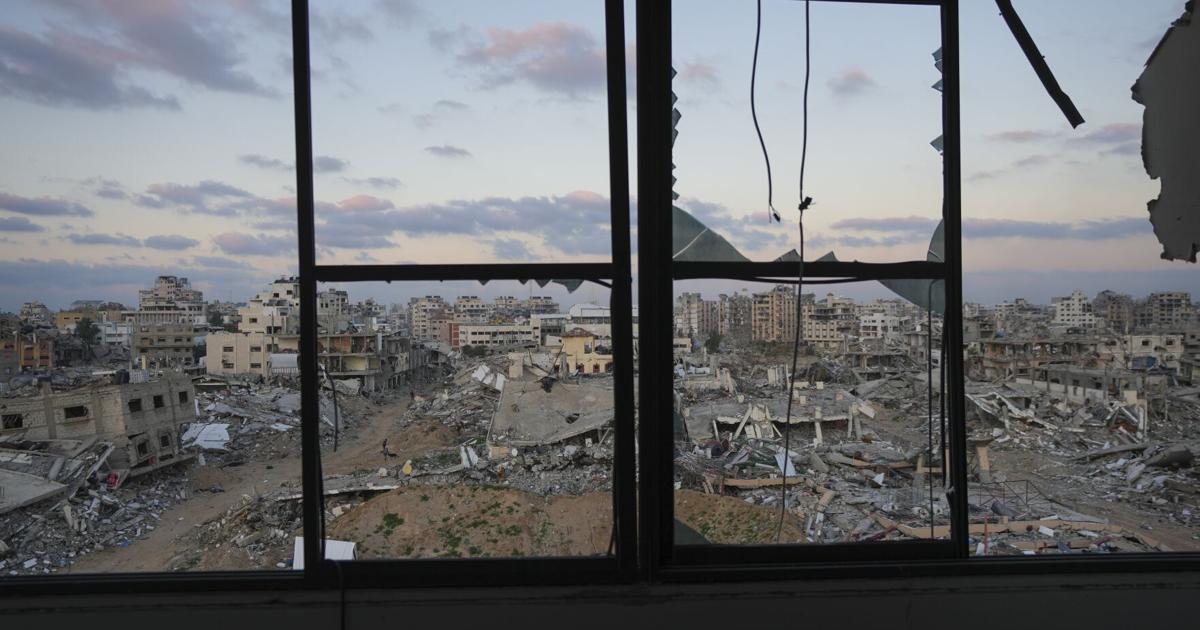
JERUSALEM (AP) — Palestinians will mark this year the 77th anniversary of their mass expulsion from what is now Israelan event that is at the core of their national struggle.
But in many ways, that experience pales in comparison to the calamity now faced in the Gaza Strip — particularly as President Donald Trump has suggested that displaced Palestinians in Gaza be permanently resettled outside the war-torn territory and that the United States take “ownership” of the enclave.
Palestinians refer to their 1948 expulsion as the Nakba, Arabic for catastrophe. Some 700,000 Palestinians — a majority of the prewar population — fled or were driven from their homes before and during the 1948 Arab-Israeli war that followed Israel’s establishment.
After the war, Israel refused to allow them to return because it would have resulted in a Palestinian majority within its borders. Instead, they became a seemingly permanent refugee community that now numbers some 6 million, with most living in slum-like urban refugee camps in Lebanon, Syria, Jordan and the Israeli-occupied West Bank.
In Gaza, the refugees and their descendants make up around three-quarters of the population.
Israel’s rejection of what Palestinians say is their right of return to their 1948 homes has been a core grievance in the conflict and was one of the thorniest issues in peace talks that last collapsed 15 years ago. The refugee camps have always been the main bastions of Palestinian militancy.
Now, many Palestinians fear a repeat of their painful history on an even more cataclysmic scale.
All across Gaza, Palestinians in recent days have been loading up cars and donkey carts or setting out on foot to visit their destroyed homes after a ceasefire in the Israel-Hamas war took hold Jan. 19. The images from several rounds of mass evacuations throughout the war — and their march back north on foot — are strikingly similar to black-and-white photographs from 1948.
Mustafa al-Gazzar, in his 80s, recalled in 2024 his family’s monthslong flight from their village in what is now central Israel to the southern city of Rafah, when he was 5. At one point they were bombed from the air, at another, they dug holes under a tree to sleep in for warmth.
Al-Gazzar, now a great-grandfather, was forced to flee again in the war, this time to a tent in Muwasi, a barren coastal area where some 450,000 Palestinians live in a squalid camp. He said then the conditions are worse than in 1948, when the U.N. agency for Palestinian refugees was able to regularly provide food and other essentials.
“My hope in 1948 was to return, but my hope today is to survive,” he said.
The war in Gaza, which was triggered by Hamas’ Oct. 7 attack into Israel, has killed over 47,000 Palestinians, according to local health officials, making it by far the deadliest round of fighting in the history of the conflict. The initial Hamas attack killed some 1,200 Israelis.
The war has forced some 1.7 million Palestinians — around three quarters of the territory’s population — to flee their homes, often multiple times. That is well over twice the number that fled before and during the 1948 war.
Israel has sealed its border. Egypt has only allowed a small number of Palestinians to leave, in part because it fears a mass influx of Palestinians could generate another long-term refugee crisis.
The international community is strongly opposed to any mass expulsion of Palestinians from Gaza — an idea embraced by far-right members of the Israeli government, who refer to it as “voluntary emigration.”
Israel has long called for the refugees of 1948 to be absorbed into host countries, saying that calls for their return are unrealistic and would endanger its existence as a Jewish-majority state. It points to the hundreds of thousands of Jews who came to Israel from Arab countries during the turmoil following its establishment, though few of them want to return.
Even if Palestinians are not expelled from Gaza en masse, many fear that they will never be able to return to their homes or that the destruction wreaked on the territory will make it impossible to live there. One U.N. estimate said it would take until 2040 to rebuild destroyed homes.
The Jewish militias in the 1948 war with the armies of neighboring Arab nations were mainly armed with lighter weapons like rifles, machine guns and mortars. Hundreds of depopulated Palestinian villages were demolished after the war, while Israelis moved into Palestinian homes in Jerusalem, Jaffa and other cities.
In Gaza, Israel has unleashed one of the deadliest and most destructive military campaigns in recent history, at times dropping 2,000-pound (900-kilogram) bombs on dense, residential areas. Entire neighborhoods have been reduced to wastelands of rubble and plowed-up roads, many littered with unexploded bombs.
Yara Asi, a Palestinian assistant professor at the University of Central Florida who has done research on the damage to civilian infrastructure in the war, says it’s “extremely difficult” to imagine the kind of international effort that would be necessary to rebuild Gaza.
Even before the war, many Palestinians spoke of an ongoing Nakba, in which Israel gradually forces them out of Gaza, the West Bank and east Jerusalem, territories it captured during the 1967 war that the Palestinians want for a future state. They point to home demolitions, settlement construction and other discriminatory policies that long predate the war, and which major rights groups say amount to apartheidallegations Israel denies.
Asi and others fear that if another genuine Nakba occurs, it will be in the form of a gradual departure.
“It won’t be called forcible displacement in some cases. It will be called emigration, it will be called something else,” Asi said.
“But in essence, it is people who wish to stay, who have done everything in their power to stay for generations in impossible conditions, finally reaching a point where life is just not livable.”
___
Associated Press reporters Wafaa Shurafa and Mohammad Jahjouh in Rafah, Gaza Strip, contributed to this report.
___
The Associated Press is republishing this story from May 14, 2024, to update with the ceasefire and President Donald Trump’s comments about the Gaza Strip.
The Dictatorship
Trump’s Guantánamo Bay detention plan is a disaster. Just look at history.
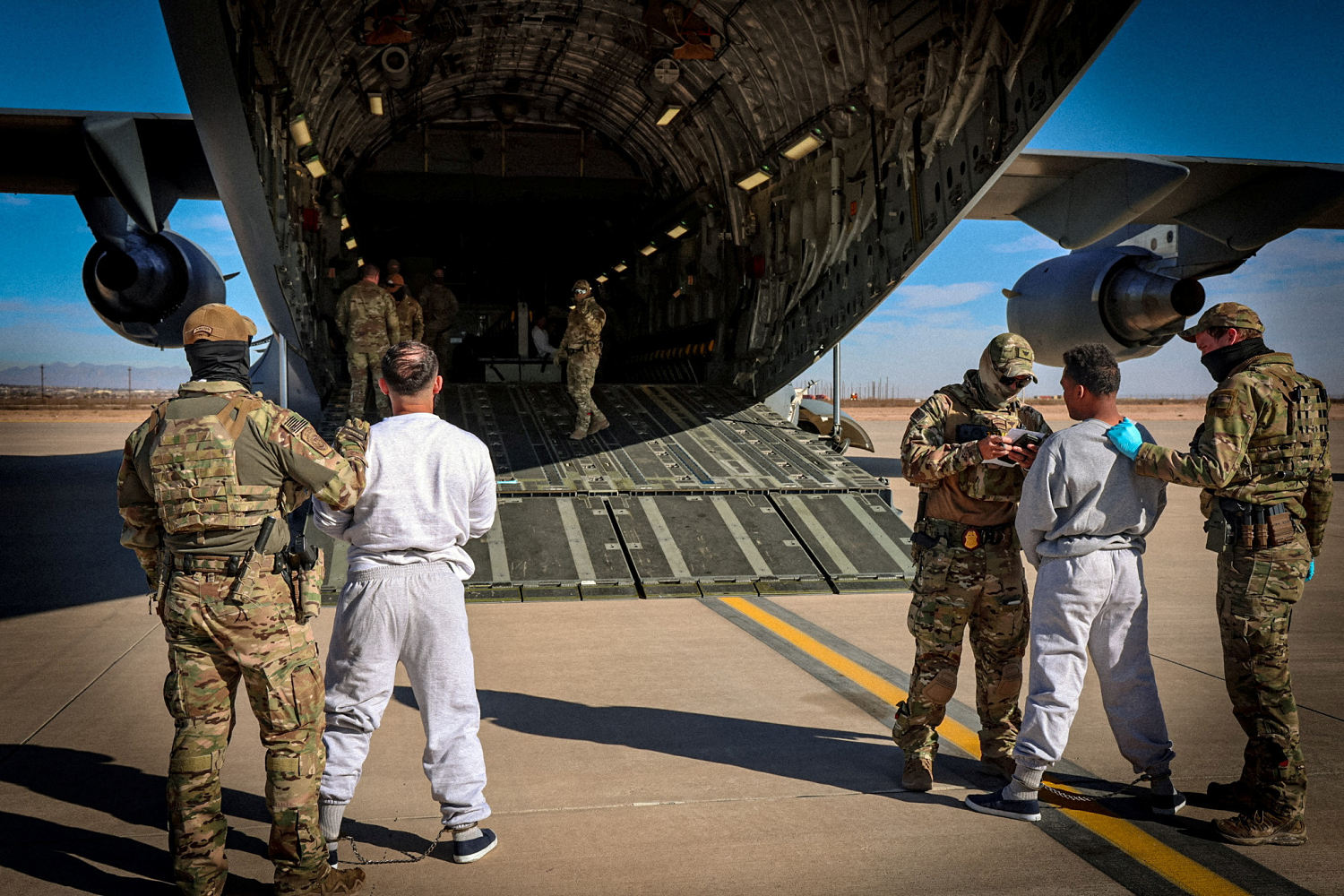
On Tuesday, White House press secretary Karoline Leavitt said the Trump administration had sent 10 immigrants to Guántanamo Bay, Cuba, for detention — an unprecedented move. And just the beginning.
On Jan. 29, President Donald Trump signed a 128-word memo calling for a 30,000-bed immigrant detention facility to be built at Guantánamo Bay for “high-priority criminal aliens unlawfully present in the United States.” The memo set in motion a project that, if fully realized, will be a financial disaster while posing a grave threat to immigrants and citizens alike, potentially for decades to come.
The memo set in motion a project that, if fully realized, will be a financial disaster while posing a grave threat to immigrants and citizens alike.
Transporting tens of thousands of people from the U.S. mainland and detaining them at Guantánamo makes no sense financially. The U.S. government will need to construct a massive site for detention — along with medical facilities, food and sanitation services, staffing and security on a remote island with limited, aging infrastructure — with a likely, albeit as yet unknown, cost of hundreds of millions of dollars.
Defense officials were reportedly shocked by Trump’s order. The island’s existing Migrant Operations Center was designed for people picked up in boats by the Coast Guard — not tens of thousands of longtime U.S. residents, including children. NBC News is reporting that already tent camps are being built to house some of these new detainees, while there are also plans to detain immigrants at the high-security prison built after 9/11.
This expensive project will continue to drain American coffers for years, even decades, especially if Guantánamo becomes a detention site for people who have been ordered deported but whose home countries do not accept deportations.
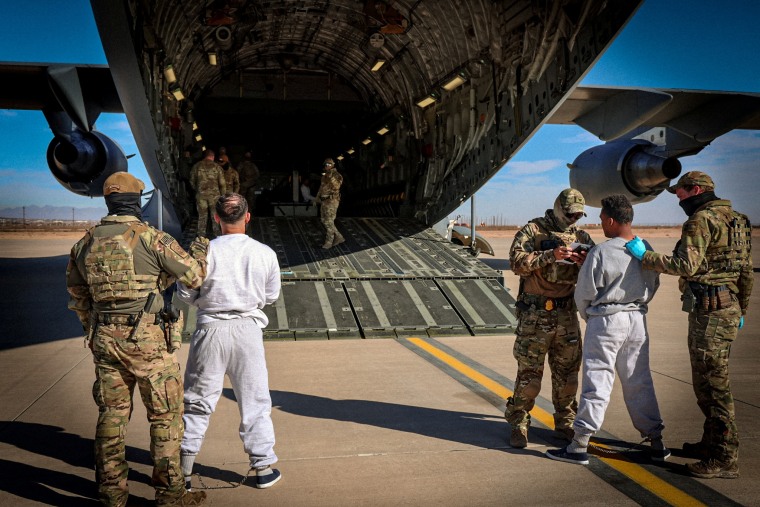
While the operational feasibility of Trump’s plan is dubious, history suggests that such a move could enable the government to commit human rights abuses and inflict serious neglect on people detained there, far from lawyers, the media and congressional oversight. Unfortunately, that could also be the point.
Our government held hundreds of men without charge at Guantánamo after the Sept. 11, 2001, attacks, and made it a notorious site of torture and crueltyfalsely claiming that international and U.S. law did not apply to people with terrorism allegations. Perhaps less well-known is that Guantánamo also has a sordid history of quasi-hidden migrant detention. In the 1990s, the Coast Guard intercepted at sea tens of thousands of people from Haiti and Cuba fleeing violence and human rights violations.
More than 45,000 peoplewere taken to Guantánamo and held in tent camps plagued by inhumane conditions. Thousands of Haitian nationals were returned to Haiti despite having credible fears of persecution, forcing parents to leave their children behind at Guantánamo.
By 1995 more than 200 unaccompanied kids from Haiti were still languishing on the island despite having relatives and other sponsors in the United States ready to welcome them. At the time, a New York Times columnist wrote that the tents that housed them leaked when it rained, medical attention was inadequate, and children were isolated and fearful — some even contemplated suicide.
Fast-forward 30 years, and we are now at risk of entering a new chapter of this shameful history. By design, there is little public information about how the existing migrant facility operates, prompting a federal lawsuit from the American Civil Liberties Union and the International Refugee Assistance Project in September. Any detention standards, such as they exist, are not public. We do not know what procedures are being used to keep people safe and address their medical conditions or to provide care and educational services to children or religious accommodation or even access to lawyers. Moreover, the U.S. government deniesthat the people it intercepts and holds at the facility are actually “detained.”
Fast-forward 30 years, and we are now at risk of entering a new chapter of this shameful history.
The Trump administration has already shown an utter disregard for the rights and dignity of people who are immigrants. Previous reports suggest that migrants who have been detained at Guantánamo have been denied their basic rights to medical care, sanitation and hygiene, as well as access to counsel. Though little is known about how the Trump administration might execute on this unprecedented plan at the scale it proposes, officials cannot simply wave away the rights of immigrants they wish to detain at Guantánamo or the legal barriers to operating what would become essentially the largest detention camp known to the United States. For example, immigrants who are detained have a right to access counselbut there is no indication that the government has considered how to ensure it in this high-security, remote setting. And in the past, numerous lawsuits were filed over the detention and treatment of Haitian refugees held there.
Congress should use upcoming spending and defense bills to prohibit the Trump administration from using taxpayer dollars to build and operate this massive and ill-advised detention site. In doing so, it would deny Trump the opportunity to turn Guantánamo into an island of despair for thousands of our immigrant neighbors and loved ones.
Naureen Shah is the deputy director of government affairs, Equality Division, for the ACLU.
-

 The Josh Fourrier Show3 months ago
The Josh Fourrier Show3 months agoDOOMSDAY: Trump won, now what?
-
Economy3 months ago
Fed moves to protect weakening job market with bold rate cut
-
Economy3 months ago
Harris dismisses Trump as ‘not serious’ on the economy in BLN interview
-
Economy3 months ago
It’s still the economy: What TV ads tell us about each campaign’s closing message
-
Politics3 months ago
Donald Trump wants Americans to hate Kamala Harris — but he’s failing
-
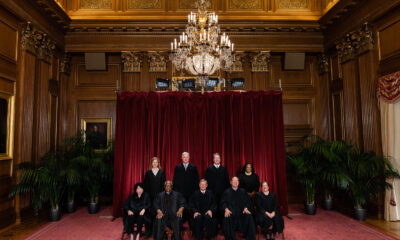
 Politics3 months ago
Politics3 months agoHow Republicans could foil Harris’ Supreme Court plans if she’s elected
-

 Politics3 months ago
Politics3 months agoDemocrats express concern over Gaetz pick
-
Economy3 months ago
Biden touts economic gains, acknowledges a long way to go



